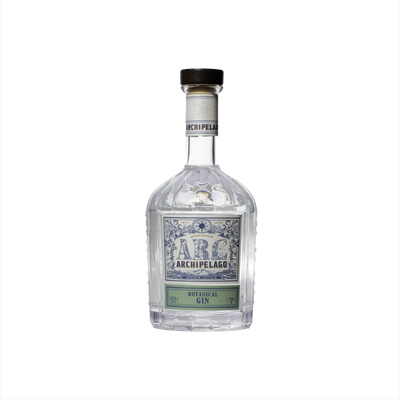Botanical American Gin
What is Botanical American Gin?
Botanical American Gin represents a craft-focused category within American Gin that emphasizes creative botanical blends beyond traditional juniper-forward profiles. These gins showcase American distillers' innovation by incorporating locally-sourced ingredients like wild herbs, native fruits, exotic spices, and regional botanicals that reflect their geographic origins. The defining characteristic of Botanical American Gin lies in its complex, layered flavor profiles where multiple botanicals work together to create distinctive taste experiences that often tell the story of their specific American terroir.
Learn More About Botanical American Gin
What makes Botanical American Gin unique?
Botanical American Gin stands apart from other American gins through its emphasis on locally sourced and often unconventional botanicals that reflect regional American terroir, moving well beyond traditional juniper-forward profiles. While London Dry and Navy Strength American gins stick closer to classical formulations, Botanical American Gin makers experiment with indigenous plants like Douglas fir, desert sage, wild bergamot, and regional citrus varieties that create distinctly American flavor signatures. This approach results in gins that tell the story of their specific geographic origins, whether it's the Pacific Northwest's evergreen forests or the Southwest's high desert landscapes.
How is Botanical American Gin made?
Botanical American gin starts with a neutral grain spirit that gets infused with juniper berries and a carefully selected blend of botanicals like coriander, citrus peels, angelica root, and other herbs and spices. The distiller typically uses one of several methods: vapor infusion (where the botanicals hang in baskets above the spirit during distillation), maceration (soaking the botanicals directly in the spirit before distillation), or a combination of both techniques. After distillation, the gin is usually diluted with water to bottling proof and may undergo filtration to achieve the desired clarity and smoothness.
How do you drink Botanical American Gin?
Botanical American gin shines brightest in cocktails where its complex botanicals can play with other ingredients—think classic gin and tonics, martinis, or contemporary craft cocktails that highlight floral and herbal notes. While some premium expressions can be sipped neat or over ice to appreciate their botanical complexity, most people enjoy these gins mixed, as the dilution and complementary flavors help the various botanicals bloom on your palate. These versatile spirits work beautifully in everything from refreshing summer cocktails with cucumber and herbs to more robust winter drinks with warming spices, making them perfect year-round companions for cocktail lovers who appreciate nuanced, artisanal spirits.
How do I choose good Botanical American Gin?
Start by considering the botanical profile that appeals to your palate - citrus-forward gins work beautifully in bright summer drinks like gin and tonics, while juniper-heavy expressions shine in classic martinis and Negronis. Read the distillery's botanical list and tasting notes to understand whether you're getting floral lavender and rose, earthy sage and rosemary, or bold spices like cardamom and coriander. Match your gin to your intended cocktail: herbaceous gins complement cucumber cocktails and garden-fresh drinks, while spice-driven bottles add complexity to stirred cocktails that benefit from warming notes.
Nutritional Information
Typical Calorie Range per Ounce: 64-70 calories
Typical Carbohydrate Range per Ounce: 0-0.1 grams
Typical Sugar Range per Ounce: 0 grams
Typically Gluten Free: Yes
Most American botanical gins start with a neutral grain spirit base that gets distilled to remove gluten proteins, making the final product safe for those with gluten sensitivities. The botanical infusion process doesn't add carbohydrates or sugars - those juniper berries, citrus peels, and herbs contribute flavor compounds rather than calories. That said, production methods can vary between distilleries, so always check the specific product label and manufacturer information to confirm gluten-free status if you have celiac disease or severe gluten sensitivity.
Scrolled this far? Your reward? Botanical American Gin Trivia!
- The first American gin distillery wasn't established until 2010, making craft American gin younger than the iPhone. Before that, practically every gin consumed in America was imported from Europe, which explains why many bartenders still reflexively reach for London Dry when mixing cocktails.
- American gin makers can legally use any botanical they want without restriction, while European gin producers must follow strict regulations about which plants qualify as "traditional" botanicals. This freedom has led to gins infused with everything from Douglas fir needles to desert sage to locally foraged mushrooms.
- The term "botanical" on American gin labels doesn't guarantee the gin contains actual plant matter – it often refers to flavor compounds extracted from plants during distillation. Some premium American gins use vapor infusion, where botanicals never touch the liquid but impart flavor through steam, creating cleaner, brighter profiles than traditional steeping methods.
- Several American distilleries grow their own juniper berries, breaking the centuries-old tradition of sourcing them exclusively from Europe. Colorado and Nevada now produce juniper with distinctly different flavor profiles – more citrusy and less piney than their Mediterranean cousins – creating uniquely American expressions that taste nothing like classic London Dry.
- American gin distillers frequently collaborate with local farms to create hyper-regional expressions that capture specific terroir, like using seaweed from Maine's coast or lavender from Washington's valleys. One California distillery even releases seasonal batches timed to specific botanical harvests, meaning their spring gin tastes completely different from their fall bottling of the same recipe.
Higher-proof spirits can be intense. Mix carefully, taste thoughtfully, and enjoy responsibly.
Gift message (optional)


